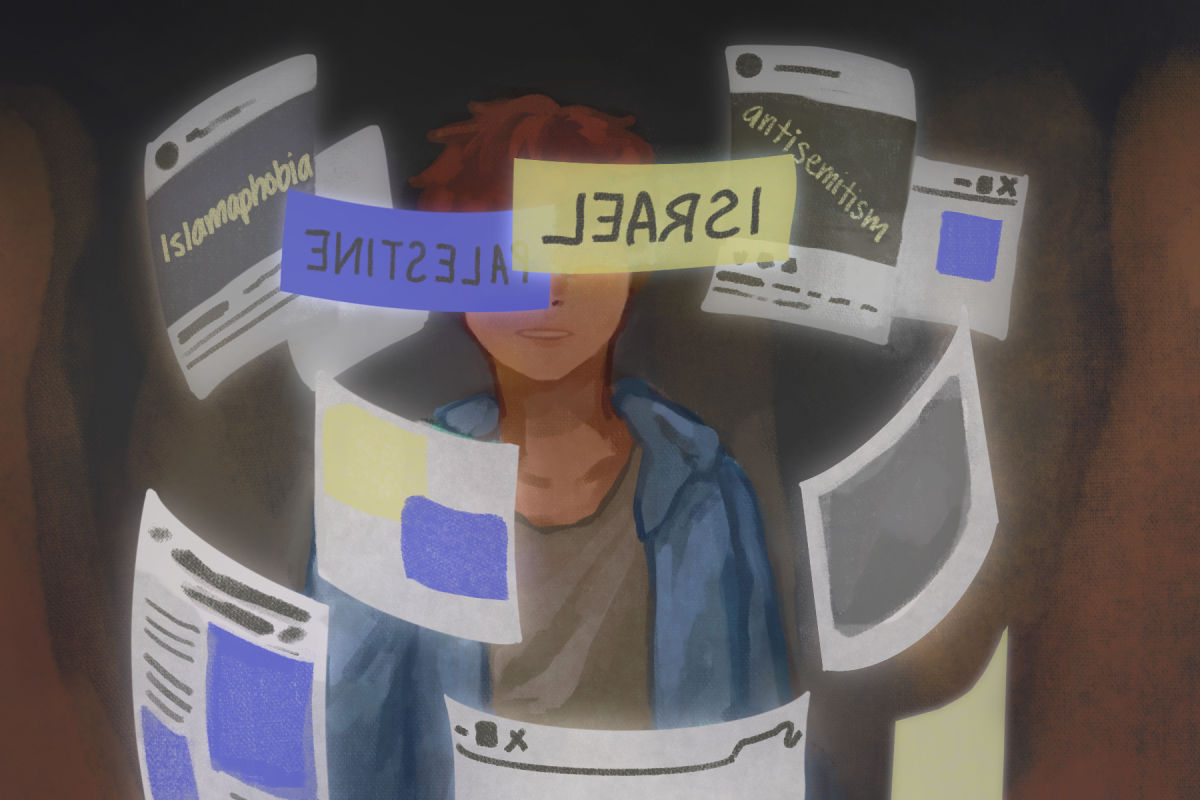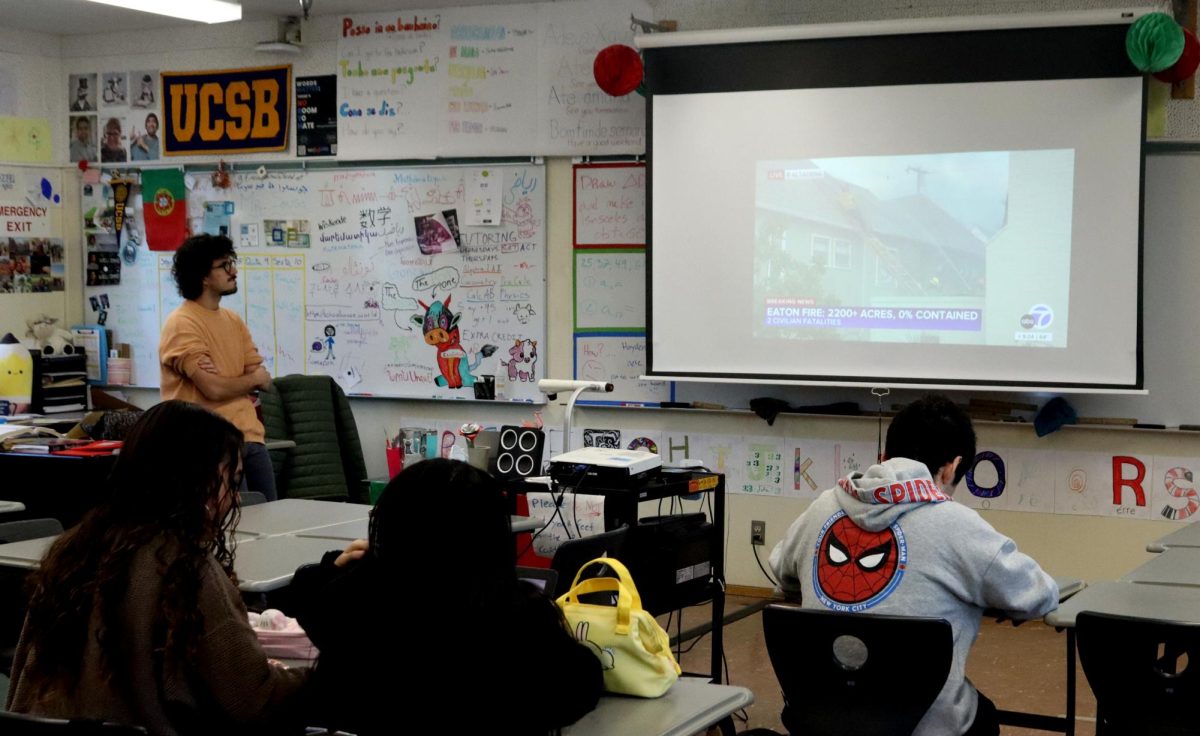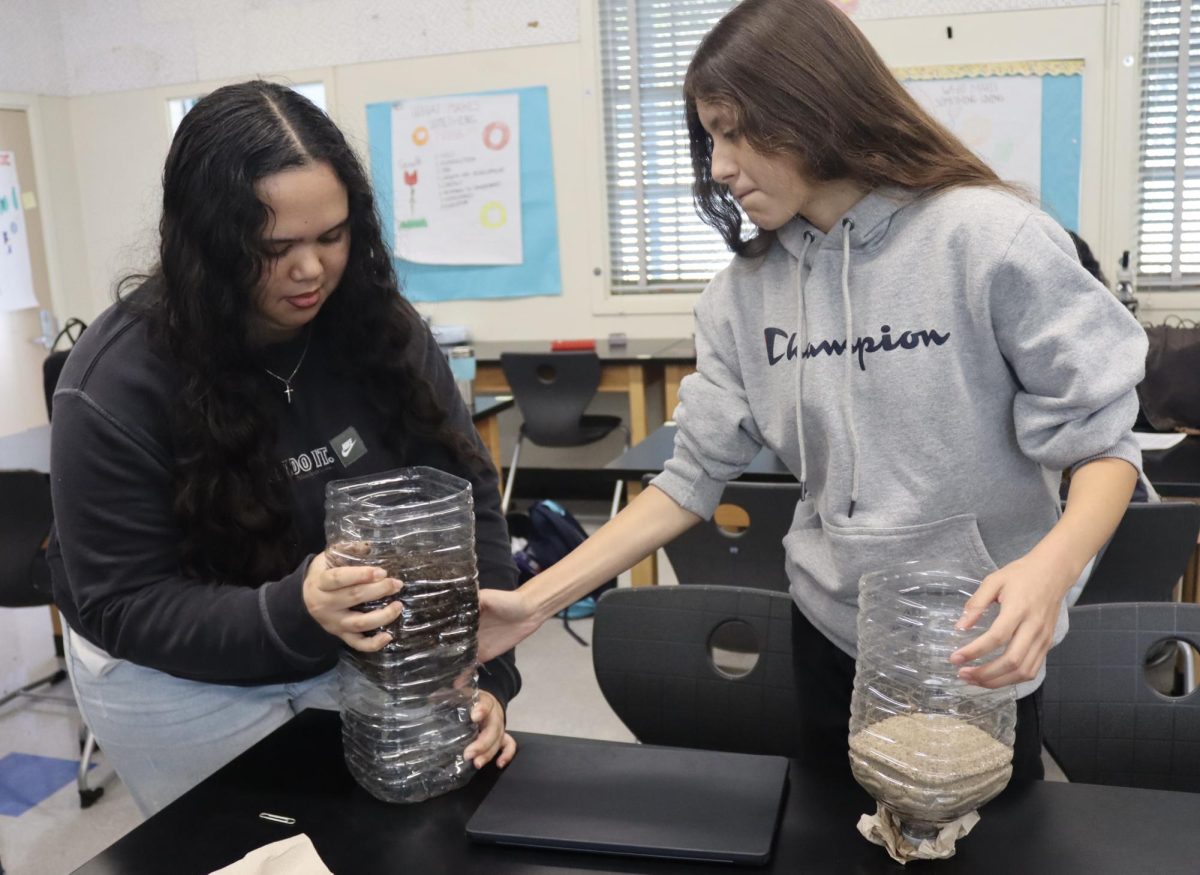In the age of social media, wars are documented in multiple ways. The Israel-Hamas war has been documented with almost daily Israeli reports and Palestinian live recordings of the ongoing violence. Consequences of bigoted violence has resulted from the large swarth of misinformation intermingled with real reporting, such as the shooting of a Palestinian college student in Burlington, Vermont, on Nov. 25, 2023.
Beginning on Oct. 7, 2023, the death toll in the Israel-Hamas war nears 30,000, according to the New York Times on Feb. 22. Almost half of those killed have been children. Since the war’s inception, documentation of the war is often graphic and overwhelming.
In a CBS News Investigation from Dec. 19, 2023, a team compiled three test accounts searching terms on TikTok and Instagram relating to Israel, Palestine and both. Though these accounts had content geared to high school students found on their algorithms, soon materials relating to the war sprang up, including misinformation. Even if large platforms like X (the platform formerly known as Twitter) attempt to combat the potential to fall into a rabbit hole of deception, the fear of bigotry weaponizing times of crisis and needed humanitarian efforts are already seen across the country.
Students must utilize media literacy skills, by ensuring precautions on online content, to question a post’s or video’s validity to uphold valuable and sensitive information regarding the Israel-Hamas war. It’s crucial not to be a part of the circling centers of misinformation that have generated more harm in a time with humanitarian needs. Especially as teens depend on social media to receive news and information on current events, teens must check to ensure accuracy.
In our current digital age, social media has become a reliant central information channel. This dependency generates a threat of bias and misinformation being spread online that can present harmful consequences of rabbit holes of bigotry that emerge violence.
The lack of factual evidence and misinformation leads to a path of ignorance as demonstrations of antisemitism and Islamophobia have seen a rise nationwide. The Anti-Defamation League (ADL) recorded 2,031 reports of antisemitic incidents from Oct. 7 to Dec. 7, 2023, seeing a staggering 388 percent increase. Similarly, the Council on American-Islamic Relations (CAIR) accounted for 2,171 complaints and requests for help over incidents of Islamophobia from Oct. 7 to Dec. 2, 2023.
The consequences of prejudice toward these marginalized groups have resulted in violence seen in the shooting of a Palestinian college student in Vermont. Hisham Awartani, a student from Brown University, was walking with his two friends of Palestinian descent, before being shot near the campus of the University of Vermont. Incidents like Awartani are a stark reminder that many with malicious intent and bigotry will take the overwhelming amount of misinformation available on the war and twist it for their agenda.
These disinformation claims are also propagated by the warring sides. In one incident, Israel’s newspaper The Jerusalem Post claimed a viral video of a dead Palestinian child was a plastic doll. The Post later retracted this article. Always be sure to be cautious with what you come across online, regardless if it is shared or reposted by a friend. Double checking with a credible publication to see if it has been documented and being aware of the presence of misinformation can enhance one’s digital literacy. These simple steps must be essential for students to be proficient in an ever-changing digital landscape.









